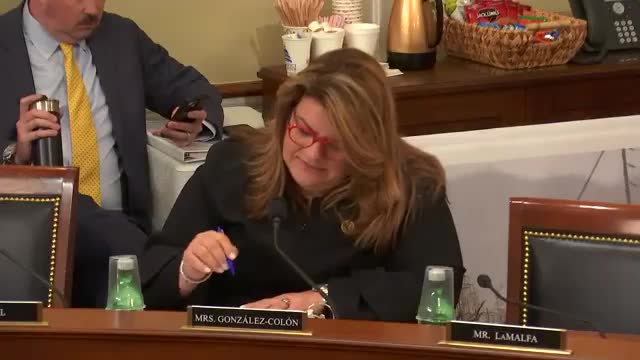Puerto Rico faces energy crisis as renewable goals slip away
September 26, 2024 | Natural Resources: House Committee, Standing Committees - House & Senate, Congressional Hearings Compilation
This article was created by AI summarizing key points discussed. AI makes mistakes, so for full details and context, please refer to the video of the full meeting. Please report any errors so we can fix them. Report an error »

During a recent government meeting focused on Puerto Rico's energy landscape, officials expressed significant concerns regarding the island's renewable energy goals and the transition from oil to liquefied natural gas (LNG). Currently, Puerto Rico's renewable energy composition stands at only 7%, far below the mandated targets of 40% by 2025, 60% by 2040, and 100% by 2050, as outlined in Law 9-19. Experts indicated that, based on current statistics, achieving these goals appears unlikely.
The discussion highlighted the urgent need for Puerto Rico to shift from burning bunker oil to LNG to enhance energy reliability and reduce costs. Officials noted that if regulatory approvals were granted immediately, existing plants could convert to natural gas within six months, potentially saving ratepayers approximately $72 million annually. However, the process of obtaining necessary permits has been slow, with requests submitted to local and federal agencies in the past four months.
Concerns were raised about the island's energy capacity, with predictions of a shortfall in peak capacity reserves for the next 18 to 24 months until new installations are completed. The Army Corps of Engineers has a $5 billion contract aimed at deploying fast power solutions, which could provide up to 565 megawatts of capacity to bridge the gap until new resources are available.
Additionally, the meeting addressed the impact of federal policies on Puerto Rico's energy situation, particularly the Biden administration's moratorium on LNG exports, which has reportedly contributed to rising LNG prices. Despite these challenges, officials emphasized the importance of cutting through bureaucratic red tape to expedite the development of reliable energy sources for the island.
As Puerto Rico continues to navigate its energy transition, the need for a coordinated effort among local and federal agencies remains critical to ensure that residents have access to reliable and affordable electricity.
The discussion highlighted the urgent need for Puerto Rico to shift from burning bunker oil to LNG to enhance energy reliability and reduce costs. Officials noted that if regulatory approvals were granted immediately, existing plants could convert to natural gas within six months, potentially saving ratepayers approximately $72 million annually. However, the process of obtaining necessary permits has been slow, with requests submitted to local and federal agencies in the past four months.
Concerns were raised about the island's energy capacity, with predictions of a shortfall in peak capacity reserves for the next 18 to 24 months until new installations are completed. The Army Corps of Engineers has a $5 billion contract aimed at deploying fast power solutions, which could provide up to 565 megawatts of capacity to bridge the gap until new resources are available.
Additionally, the meeting addressed the impact of federal policies on Puerto Rico's energy situation, particularly the Biden administration's moratorium on LNG exports, which has reportedly contributed to rising LNG prices. Despite these challenges, officials emphasized the importance of cutting through bureaucratic red tape to expedite the development of reliable energy sources for the island.
As Puerto Rico continues to navigate its energy transition, the need for a coordinated effort among local and federal agencies remains critical to ensure that residents have access to reliable and affordable electricity.
View full meeting
This article is based on a recent meeting—watch the full video and explore the complete transcript for deeper insights into the discussion.
View full meeting